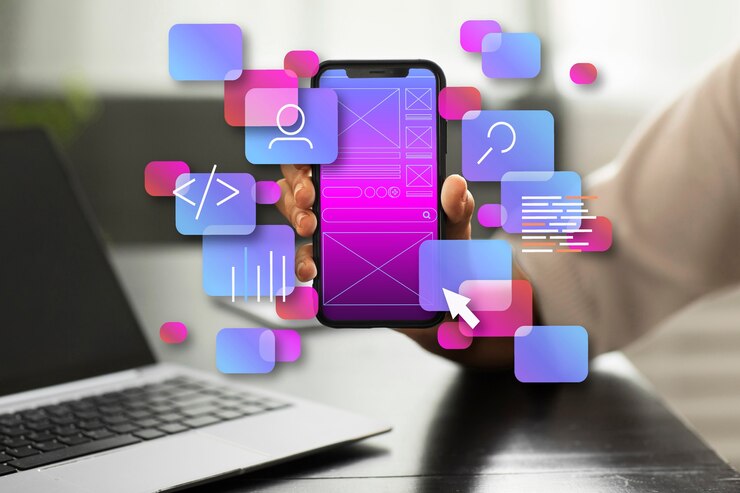Mobile devices are hopelessly embedded in our everyday lives. We use them for work, communication with friends and family, and entertainment. Our devices are in heavy rotation unless we’re sleeping. That’s when we charge them.
But we charge our mobile devices often, relying on available power sockets to get the job done. As our devices become more sophisticated and powerful, they also become less energy efficient, demanding more battery charge to power video, gaming, color displays, and all the other stuff we must have constant access to.
But for every challenge, there’s a solution. So, this post is about maximizing the life of your mobile device battery with the ultimate guide to power management and how you can bridge the gap between charges.
Table of Contents
The Challenge
The more you demand from your mobile device in terms of performance, the more power you’ll use. You have the need for speed but speed costs power, demanding that non-crucial functions are shuffled down the priority list to “low power”. But there are other challenges afoot, besides your mobile device behavior.
One is the pace of battery development to achieve a longer charge time. While function has developed rapidly, battery life hasn’t changed. But the lithium battery, long the mainstay of mobile power, may soon be replaced by something completely different. Until then, battery technology and capacity isn’t keeping pace with consumer need.
A prime example of this is the Samsung Galaxy Note, released in 2011 with a 2500mAh battery, which could hold a charge for the entire working day. But the Galaxy Note 20 Ultra, released in 2020 with a 4500mAh battery can do better than that, right?
Not so much. The larger, higher-resolution screen, faster processor, and additional RAM meant that this version of the Galaxy sucked power like nobody’s business. Just add all those applications running in the background and you’d need to charge your mobile device more than once during the course of a working day.
And then, there’s the problem of battery size, limiting the amount of charge that can be held, while still keeping your mobile device lightweight. A cell phone battery accounts for a high proportion of your phone’s weight as it is. So, what’s the answer?
Wireless Power
Wireless chargers are becoming a way of life for those who need the assurance of a device that’s always ready for action. While the technology has been around since 2008, many users are slow to adopt it. That said, sales of wireless chargers began to rise sharply in 2019, signaling a sea change in attitude.
But wireless charging is the future, whether we’re catching on or not. And as the battery life of mobile devices continues to lag behind what these devices are capable of, the adoption of wireless charging will continue and the technology will become as common as WiFi hotspots.
If you don’t own a wireless charger yet, you probably will. In the meantime, here are some tips to conserve mobile device power while you’re still tethered to that charger!
Identify the Power Suckers
Knowing what’s sucking the life out of your mobile device is the first step toward staunching the power bleed. Let’s look at some of the top culprits among your phone’s features and how to neutralize their demands on your battery:
Standby Time
We look at our mobile devices obsessively. Many of us are addicted to consulting them as electronic know-it-alls to the point that 56.9% of Americans described themselves as “addicted”.
But leaving that high-resolution, super-bright screen on all the time is a major power sucker! And you don’t need to drain your phone of power just to check the time and put it back down. Set your phone to go on standby (the screen goes dark and turns off) after 20 seconds. You’re not going to lose your mind if you have to wait a second for your phone to catch up with you and you’ll save battery time.
Brightness and Resolution
We all love the ultra-brightness and high resolution of the sophisticated mobile devices on the market now. But the brighter your screen is, the more charge it’s going to take. Devices with large screens and higher pixel counts will demand more of your charge. And you don’t really need your screen that bright (admit it)!
Reduce your screen brightness to 75%. Or, if you have a device with a brightness setting that adapts to environmental brightness automatically, enable the feature. Either way, you’ll be amazed by how much longer your device will stay charged.
With a high-end phone featuring high resolution, reduce resolution to maintain battery charge. For WQHD+(Wide Quad High Definition Plus), step down to FullHD+ or HD+ to reduce power consumption.

GPS and Bluetooth
Do you always need your GPS? No? Turn it off! It’s another power sucker. Bluetooth is also not something you need to have on all the time. Activate your Bluetooth capability only when it’s needed and your associated wearables are in use. This action supports longer battery life for both your device and the wearable.
Deactivated Energy Saving Mode
When it comes to sparing your device’s battery charge, energy-saving mode is your friend! Activating it will prompt your phone to disable “always on”, reduce screen brightness, and turn off 5G. Your device’s CPU will also reduce its speed.
It might take you a couple of seconds longer to do something on your phone but it will spare your battery for those moments when you really do need to use your phone and prevent overheating.
Now that you know who the major energy-sucking features are, let’s look at some of the apps that are causing your battery to retire for the day sooner than you’d like.
Power Sucking Apps
Let’s look at the applications that are draining your device of power. Most of these can be put on “sleep” (only occasionally running in the background) or “deep sleep” (which means you open them if they’re genuinely needed):
Roaming
Connecting to 5G networks can drain a lot of power, especially when you’re set to roaming. But if you’re traveling, isn’t battery life important? You may not know the lay of the land or where you can charge if you run out of juice. Either disable roaming in settings or set your device to “airplane mode”. While airplane mode will turn off everything, including WiFi, your battery will be spared.
Disabled Dark Mode
Dark Mode allows you to reduce the effect of blue light. Blue light has been identified as a disrupter of circadian rhythms – the basis of your sleep cycle. Enable dark mode and you’ll spare your eyes when using your phone at night or in conditions of low ambient lighting. You’ll sleep better too! Dark mode works by shutting down some of the pixels on your screen, reducing demands on your device’s battery.
And while it’s neither a feature nor an application, low network coverage is another power sucker. When in an area with network coverage challenges, turn off your device or put it in airplane mode. Otherwise, your device will be continually searching for a network to connect to and that, as I’m sure you know, sucks your charge!
Take Charge!
Wireless charging is the wave of the future, so if you’re not on the bandwagon yet, you will be soon, as technology continues to develop. But in the meantime, the foregoing tips about power consumption will save you the heartbreak of running out of juice at the worst possible time.
Knowing your phone and what might be sucking the charge out of it is the savvy mobile device user’s recipe for staying ahead of the curve. Summing up: know your phone and get ready! Wireless charging is about to take over!






